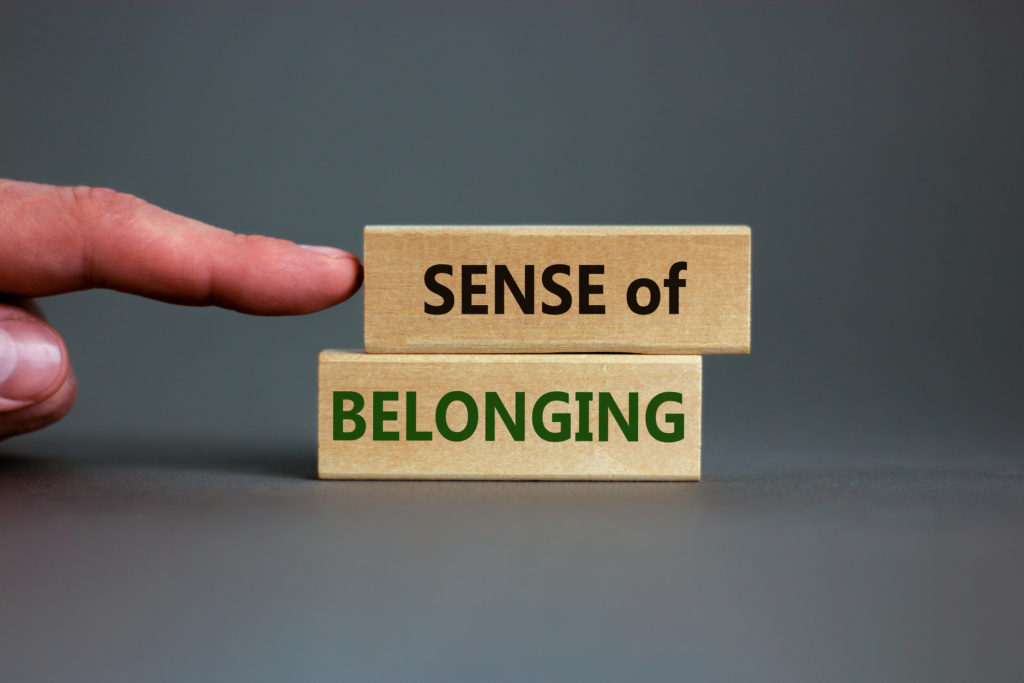What do you think of when you hear the word change? Is it positive or negative? We often do not imagine thriving during change, but it is possible, and we argue this capability is a critical need for organizations today. Organizations need their teams to be agile and constantly collaborating, innovating, and transforming to be at their best. However, our brains were not designed for the new normal, a constant state of change. From birth, our brains are wired to survive, belong, and learn. To understand how to thrive during the transitions of change initiatives, you must first understand humans’ natural emotional resistance to change, especially when there are perceived threats to their survival or sense of belonging

Surviving During Transition
We are constantly scanning the environment looking for potential inconsistencies that might signal a threat to our survival. Consistency makes it easier to survive; it frees up our cognitive resources and requires less effort when making decisions. Think about times you did not feel safe, or when you felt your life was threatened, you probably wanted change.
How do you minimize the threat reaction but also get your employees to desire change? Being consistent and transparent with your communication during change initiatives is one way to support your employees. While the change itself might elicit feelings of anxiety, the consistency of your communication can help provide the security needed during the transition. The transparency around the “why” and the vision will help build the desire to change. Consistency and transparency also help shape the environment to promote thriving, not just surviving during the transition.
Think about the support you might give your child when they are getting a shot. You consistently reassure them that it will be ok, you are transparent about what will happen and that it might hurt for a moment, and you provide them insights into why the vaccine is essential. If you do not provide the information they need, they will fill in the gaps in a way that prepares them for the worst-case scenario, so they can take action and survive the experience- in essence, their brain will do what it is wired to do in threat situations. When your child tries to “fight or flight” getting the shot, it produces emotional distress for all involved. Ideally, if the adult can prevent them from going to the worst-case scenario survival mode, the child might still be scared, but they will find enough security in your actions to find the bravery to power through the experience.
As leaders, you can apply those same principles and help your employees power through the change initiative. By leaning on the EQ-I 2.0 competency of empathy, you can visualize the emotional resistance your team might experience and be intentional about your team interactions, so they feel understood and respected during the change initiative.
Belonging During Transition
When we feel like we belong, we experience a different kind of security- our meaningful relationships and connections give us a sense of togetherness. Our brains are also wired to belong- the need to belong influences our decisions and actions. When we perceive a threat to our belongingness on a team, it can trigger an array of emotions and behaviors. As a reaction to that threat, we may attempt to fight to maintain our sense of belonging, or we might run away and look for a new place to belong, for example, looking for a new job. The change itself might also impact the social networks within your organization and force your employees or teams to build a new place of belonging.
How do you minimize the threats to employees’ belonging while also supporting them as they transition to a new team or place of belonging? Giving your employees a voice in the change initiative shifts them from feeling like change is being done to them to feeling empowered by being included to design the change initiative. Giving them a voice helps provide the conditions where team members can emotionally detach from how things were done and then positively attach to the new initiatives. Leaders also need to give the time and experiences where team members can build trust with their new social networks and begin to feel a renewed sense of belonging. Giving teams the time and the experiences needed to emotionally detach from the old and emotionally attach to the new will keep team members engaged and thriving throughout the process

Think about the support you might give a child when they change schools. Their social networks are entirely uprooted. They often struggle emotionally detaching from their group of friends in the old school and accepting a new place of belonging with their new group of friends. There is a period where they have neither, and that is often when they struggle the most. Parents explain to give it time, and they will have a new group of friends, but it is hard to see that when you are in the experience. They try to get their child to try new experiences, join new clubs or talk to the person next to them on the bus or in the classroom. Our hearts break for them because we know it feels awkward, but we are also hopeful of the new possibilities they do not quite see around the corner. It does not matter your age; our brains react to threats to belonging the same way, and our brains have similar needs to feel supported during the transition to new places of belonging.
As leaders, you can empathize with the emotional journey of finding belonging during change initiatives by accepting your own emotional vulnerability when you felt awkward and like you did not belong. During the change initiative, you can lean on the EQ-I 2.0 competency of emotional expression to share your feelings about threats to your belonging. By relying on the EQ-I 2.0 competency of flexibility, you can adapt your emotions, thoughts, and behaviors in a way that supports both the change initiative and your team members’ emotional journey with the change.
Learning as the Gateway to Thriving During Change
We are wired to grow, learn, and seek to become better versions of ourselves. This need is activated only once our survival and belongingness needs are met, but this one is critical to thriving during change. Change brings opportunities to fail, but it also brings the opportunity to grow. By meeting your team members’ need to survive and belong in the workplace, you probably have created a foundation for the team psychological safety required to learn and grow as the team and organization become better versions of themselves. Now you must focus on leading the learning as your team struggles, make mistakes, and try new things during the change initiative. Your reaction to the struggles and mistakes emotionally impacts your employees’ threat to survival, belongingness, learning, and ultimately the capability to thrive during change.
If team members feel they will lose their job if they make a mistake during the transition, they will shut down and resist the change. If team members feel they are at risk of being shamed or looked down upon because they struggle with the new, they will shut down and resist the change. On the flip side, if team members know mistakes are acceptable and valued as learning experiences during the shift and struggles are safe to explore, they will approach the change initiative with curiosity and a desire to grow and learn on their journey to becoming the best version of themselves.
Imagine yelling at a baby who is an excellent crawler but is now transitioning to walking for falling when they took a step. It seems crazy–If that pattern continued, the baby might never transition to walking. Yelling or reprimanding team members when they “fall” during their transition to the new initiatives would force a similar reaction; they would start avoiding the transition to the new. Luckily, most parents cheer their children on and help them learn by grabbing their fingers as they practice. Leaders can provide that same level of emotional and learning support. By shifting how you view mistakes and struggle during change, leaders can also learn to adapt a similar mindset that fully supports their team members’ growth as they move towards self-actualization or fully unleashes the best version of themselves.

As you begin to look at leading others through change through the lens of thriving, it will require a whole new sense of intentionality and focus from the leader. The focus is no longer on the outcome of the change initiative; it is about providing the intense security needed to learn and grow as a team throughout the transition to a better organization.

Michele Norton, Ph.D. and Jonathan Silk, Ph.D. are the founders of Thriving Teams Institute, a team and organizational learning and development firm that focuses on helping individuals, teams, and organizations thrive. The work they do is based on years of research with teams in various types of organizations (healthcare, tech, engineering, staffing, etc.) and their past personal experience being on and leading teams in military (Jonathan) and education (Michele). As they explored the differences across contexts, they also were amazed at the similarities across the contexts and how those similarities were often rooted in neuroscience. By taking a holistic and systems-based approach to understanding teams and organizations, Jonathan and Michele can help uncover how emotional needs are being met across the system and how organizational goals are being met across the system to design a holistic path towards thriving.




